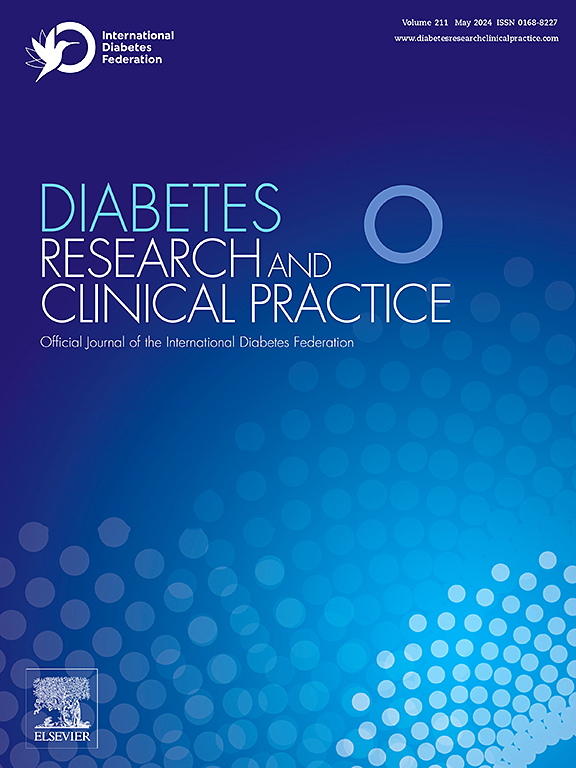Making Sense: Feasibility of an education program to Empower adults with type 1 diabetes to interpret CGM data
IF 6.1
3区 医学
Q1 ENDOCRINOLOGY & METABOLISM
引用次数: 0
Abstract
Aims
To assess the feasibility and acceptability of a structured education program focused on continuous glucose monitoring (CGM) data interpretation for adults living with type 1 diabetes.
Methods
This was a multi-centre before and after feasibility study conducted in Australia. Adults with type 1 diabetes were enrolled in the Making Sense program. This two-week program, designed in consultation with adults living with diabetes, was delivered in a hybrid format involving group sessions and self-directed online modules. Participants were followed for 6-months post-education completion. The primary outcome was feasibility, pre-determined at 75% completion rate following education module enrolment. Secondary outcomes included participant acceptability, psychosocial measures and glycemic outcomes.
Results
Between June 2023 and October 2023, 67 participants (median age 54, 70 % female, mean HbA1c 7.2 % (55 mmol/mol)) were enrolled. All used CGM continuously. Sixty-six percent used insulin pumps. Eighty-one percent completed the study and 83 % would recommend the program to other adults with diabetes. Participation was associated with improved well-being, diabetes management satisfaction and reduction in diabetes distress (p < 0.05). HbA1c fell 0.5 % (4.5 mmol/mol) for those > 7.5 % (58 mmol/mol) at baseline (p = 0.006).
Conclusions
Our CGM-related education program was feasible and acceptable. Participation may be associated with improvement psychosocial and glycemic outcomes.
有意义:一项教育计划的可行性,使成人1型糖尿病患者能够解释CGM数据
目的评估1型糖尿病成人持续血糖监测(CGM)数据解释的结构化教育项目的可行性和可接受性。方法在澳大利亚进行了多中心前后可行性研究。患有1型糖尿病的成年人参加了Making Sense项目。这个为期两周的课程是在与糖尿病患者协商的基础上设计的,采用混合形式,包括小组会议和自主在线模块。参与者在完成教育后被跟踪了6个月。主要结局是可行性,在教育模块入学后,预先确定75%的完成率。次要结局包括受试者可接受性、社会心理测量和血糖结局。结果在2023年6月至2023年10月期间,纳入了67名参与者(中位年龄54岁,70%为女性,平均HbA1c为7.2% (55 mmol/mol))。均连续使用CGM。66%的人使用胰岛素泵。81%的人完成了这项研究,83%的人会把这个项目推荐给其他患有糖尿病的成年人。参与与改善幸福感、糖尿病管理满意度和减少糖尿病困扰相关(p <;0.05)。HbA1c下降0.5% (4.5 mmol/mol);7.5% (58 mmol/mol) (p = 0.006)。结论我们的ggm相关教育方案是可行且可接受的。参与可能与改善社会心理和血糖结果有关。
本文章由计算机程序翻译,如有差异,请以英文原文为准。
求助全文
约1分钟内获得全文
求助全文
来源期刊

Diabetes research and clinical practice
医学-内分泌学与代谢
CiteScore
10.30
自引率
3.90%
发文量
862
审稿时长
32 days
期刊介绍:
Diabetes Research and Clinical Practice is an international journal for health-care providers and clinically oriented researchers that publishes high-quality original research articles and expert reviews in diabetes and related areas. The role of the journal is to provide a venue for dissemination of knowledge and discussion of topics related to diabetes clinical research and patient care. Topics of focus include translational science, genetics, immunology, nutrition, psychosocial research, epidemiology, prevention, socio-economic research, complications, new treatments, technologies and therapy.
 求助内容:
求助内容: 应助结果提醒方式:
应助结果提醒方式:


